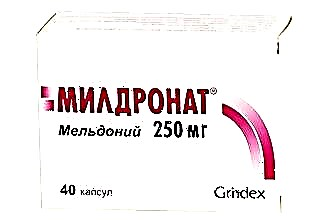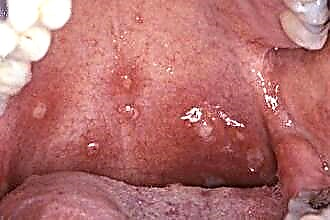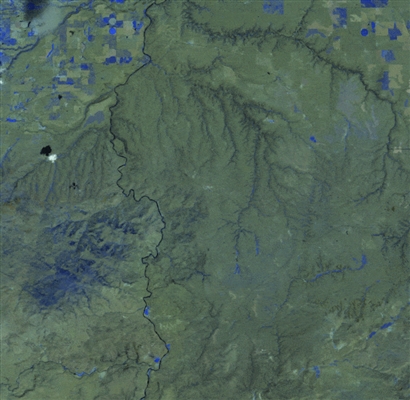Komarovsky Evgeny Olegovich is a famous pediatrician and popularizer of medicine. The doctor pays considerable attention to raising awareness among the population on how to properly treat childhood diseases at home. Many parents appreciated his recommendations regarding the prevention and treatment of colds, sore throats, and coughs. And what does Doctor Komarovsky say about a runny nose?
A runny nose in a child, according to Komarovsky, is not a reason for panic. This is a reaction to dust, allergens, hypothermia, contact with unfamiliar viruses. A child can get a runny nose very often - up to 10 times a year - and this is quite normal. The main thing is to provide such conditions under which the runny nose will pass quickly and without consequences. How can this be done? Read about it in our article.
About the causes of the common cold
 How and why does a runny nose appear? Physiologically, rhinitis is the active production of mucous secretions by the cells of the nasopharyngeal mucosa.
How and why does a runny nose appear? Physiologically, rhinitis is the active production of mucous secretions by the cells of the nasopharyngeal mucosa.
The purpose of excessive mucus production is to clear the nasal cavity of a potentially harmful factor.
A virus, bacteria, as well as pollen, wool, dust and many other irritating substances can act as a provocateur of rhinitis. Depending on the cause of the common cold, the patient is shown a certain treatment.
Let's take a look at the most common causes of a runny nose in children.
Viruses
When we talk about a cold, especially in children, in most cases we are talking about viral rhinitis.
Indeed, it is viruses that rank first among the causative agents of childhood infections. A runny nose in a child can be caused by many viruses belonging to the ARVI group (acute respiratory viral infections).
The first year in kindergarten is almost always accompanied by frequent colds for this very reason. Do not worry too much about this - this is a normal stage in the formation of the immune system. With age, a person develops antibodies to strains of many viruses, and a runny nose worries much less often.
How to understand that a child's runny nose is viral? First, the child falls ill sharply, almost immediately after hypothermia or contact with sick children / adults. Secondly, not only a runny nose appears, but also sneezing, sore throat - typical symptoms of a cold. Often, a viral rhinitis is accompanied by a high fever for the first couple of days. Gradually, the symptoms of the disease fade away, and the child recovers within 5-7 days (a runny nose and cough may bother a couple of days, but the general condition of the child is normal).
Bacteria
Bacteria rarely cause runny nose in children. However, there is a risk of secondary bacterial infection with viral rhinitis.
In the case of reproduction of bacterial microflora against the background of ARVI, they speak of a mixed form of rhinitis. What symptoms indicate this condition? Parents should pay attention to the following changes:
- the appearance of yellow or green thick snot;
- a sharp increase in temperature for 3-5 days of illness;
- the child's temperature stays at 38C and above for more than 4 days;
- conventional treatment is ineffective.
If such symptoms appear, the child should be examined by a pediatrician. They are also observed with sinusitis - inflammation of the paranasal sinuses (frontal or maxillary). Sinusitis is very common - a dangerous complication of a common rhinitis. With sinusitis, in addition to the listed symptoms, patients are worried about the heaviness in the temples, under the eyes, as well as headache, which increases with sudden movements of the head.
Non-infectious causes
Viruses and bacteria are not the only ones that can cause rhinitis. So, a very common cause of the common cold is a respiratory allergy. An allergic reaction can be caused by inhalation of pollen, animal hair, dust, household chemicals, etc. It is very important to identify the allergen (there may be several of them).
A child with allergies will need to avoid substances that provoke an allergic reaction. Otherwise, the treatment will be ineffective.
Typical signs of allergic rhinitis:
- Mucus begins to be produced after inhalation of the allergen. Usually this happens for the first time in new conditions for the child - trees have blossomed, you have changed washing powder, got a cat, etc.
- A runny nose is accompanied by sneezing, redness of the eyes.
- The mucus is watery and transparent.
- Vasoconstrictor drops quickly relieve symptoms.
In addition to allergic reactions, a child's runny nose may be associated with unfavorable conditions - excessive dryness and high air temperature, dustiness.
About rhinitis in infants
The appearance of mucous nasal discharge in an infant may have special causes. Firstly, a runny nose in a one-year-old child can be triggered by excessive dryness of the air. To solve this problem, it is necessary to provide a normal microclimate in the children's room.
Komarovsky recommends maintaining the air temperature in the house + 20C with a humidity of 60-70%.
Secondly, in a child aged 1 -2 years, a runny nose often appears during teething. Often doctors explain this by the fact that with teething, immunity decreases, and resistance to viruses decreases. However, Komarovsky questions this view. The pediatrician claims that the constant appearance of a runny nose during teething cannot be explained by numerous viruses and infections; most likely, the abundant secretion of mucus in the nose is a consequence of increased blood flow to the gums. Teething snot is clear and runny. In addition, they can bother for a long time, unlike viral rhinitis. They do not require special treatment, and pass when the eruption of the tooth is completed.
Komarovsky emphasizes that in case of a cold in a child, especially a baby, it is necessary to consult a pediatrician. Treatment can be started only after the causes of the disease are clearly identified and the doctor understands what is behind the rhinitis - a virus, allergy or bacterial infection.
Treatment
Komarovsky identifies three main components of successful rhinitis therapy:
- Cool humid air - preventing drying out of the mucous membrane by maintaining a comfortable environment in the house, ventilation, private walks.
- Water regime - providing the body with a sufficient amount of water, due to which the normal viscosity of mucus in the respiratory tract is maintained.
- The use of moisturizing drugs for the nasopharynx (primarily saline), which helps to thin the mucus and cleanse the nasopharynx.
At the same time, depending on the type of rhinitis, the described plan should be supplemented with various procedures and drugs. Let's talk about this in more detail.
Viral rhinitis
There is an opinion that with a viral rhinitis it is necessary to use antiviral drugs. However, Dr. Komarovsky rejects such recommendations. Moreover, he believes that children should take antiviral drugs only when there is a threat of influenza, herpes and some other specific viral infections. With ARVI, the appointment of antivirals is unnecessary, and you can get by with topical drugs.
The number 1 task in treating viral rhinitis in a child is to prevent the mucus from drying out in the nasopharynx.

And in order to accomplish this task, again, you should maintain optimal humidity and air temperature, and also drink plenty of water. If the house is dry, and the child refuses to drink, the mucus turns into viscous thick snot, which is very difficult to blow your nose, and there it is not far from bacterial complications.
Seawater nasal drops and sprays can be used to loosen mucus.It is worth noting that ordinary saline solution copes with this task no worse. It can be purchased cheaply at any pharmacy, or you can prepare it yourself. Saline is a weak solution of edible salt. To make it at home, you need to dissolve a spoonful of salt in a liter of boiled water (to be precise, 9 grams, but a small deviation will not affect the effectiveness of the finished solution). The saline solution should be stored in a clean bottle, or even better, a new one should be prepared every day; fortunately, its components are readily available.
Saline can be used to bury the nose, rinse the nasopharynx, and also do steam inhalation - all these procedures have a beneficial effect on the course of rhinitis of any etiology.
What to drip?
 The selection of drugs depends on the type of rhinitis, as well as on how old the baby is. Almost all nasal drops have age restrictions - they are allowed from 3 years old. An exception is isotonic drops (sea water, saline).
The selection of drugs depends on the type of rhinitis, as well as on how old the baby is. Almost all nasal drops have age restrictions - they are allowed from 3 years old. An exception is isotonic drops (sea water, saline).
Komarovsky does not recommend the use of vasoconstrictor drops and sprays (naphthyzin, nasol, tizin, etc.) for viral rhinitis. It is worth resorting to them only with severe congestion, for example, if the child cannot sleep or eat. When applying them, it should be remembered that:
- vasoconstrictors are addictive;
- they can cause swelling, burning, tingling, dry nose and mouth, as well as more serious side effects - dizziness, headache, increased pressure, insomnia;
- for children under 3 years of age, most vasoconstrictors are contraindicated, but there are also special medications for children (Galazolin for children, etc.);
- subject to the dosage and duration of treatment, side effects are rare.
It is much safer to use oil-based drops, or just oil. They envelop the mucous membrane, preventing it from drying out and crusting. For example, Komarovsky recommends treating a runny nose with the drugs Ektericid, Tocopherol and Retinol. They can be used to lubricate the mucous membrane 1-2 times a day for 4-7 days.
How to speed up your recovery?
Komarovsky recommends treating a runny nose in a child at home, but under the supervision of a pediatrician. Any treatment procedures should be discussed with the attending physician (including the use of traditional methods of treatment). Some of them can be harmful, for example, instilling plant juices into the nose, laying honey, inhaling hot vapors from potatoes, etc. Komarovsky often emphasizes that these procedures have nothing to do with civilized medicine. But how, then, to speed up the child's recovery? The answer is simple - do not interfere with the body to fight infections, and, if possible, help it. For example, walks in the fresh air, especially near water bodies, have a good effect on the condition of the nasopharynx.
Is it possible to bathe a child with a cold? Komarovsky believes that if the child does not have a temperature, then it is not only possible, but also necessary - this is an additional way to moisturize the mucous membrane.
Sitting in the bathroom for too long is not worth it, but you also don't need to give up the usual bathing. Swimming in the sea and walks along the coast are especially useful in case of a cold.



